“Doctor, we’re spending more time on paperwork than on patients,” says a staff nurse during a busy clinic shift.
The medical officer nods in agreement, knowing that appointment scheduling, billing, follow-up reminders, and insurance claims consume countless hours that could otherwise be devoted to patient care. This is a common struggle in medical practices worldwide, where efficiency often gets buried under administrative tasks.
But the good news is that with the rise of AI workflow automation tools for medical office settings, clinics and hospitals can now reduce manual tasks, streamline daily operations, and improve both staff productivity and patient experience. From automating appointment reminders to managing medical records securely, these tools are reshaping how healthcare teams function.
What is Automated Workflow for Medical Offices?
In simple terms, an automated workflow is a system where software takes over repetitive, rule-based tasks that would normally require manual effort. Instead of staff members spending hours entering data, moving files, or double-checking forms, the software does it quickly, accurately, and consistently. In a medical office, this can be a game-changer because so many tasks are routine yet critical, like processing patient intake forms, scheduling appointments, or handling insurance claims.
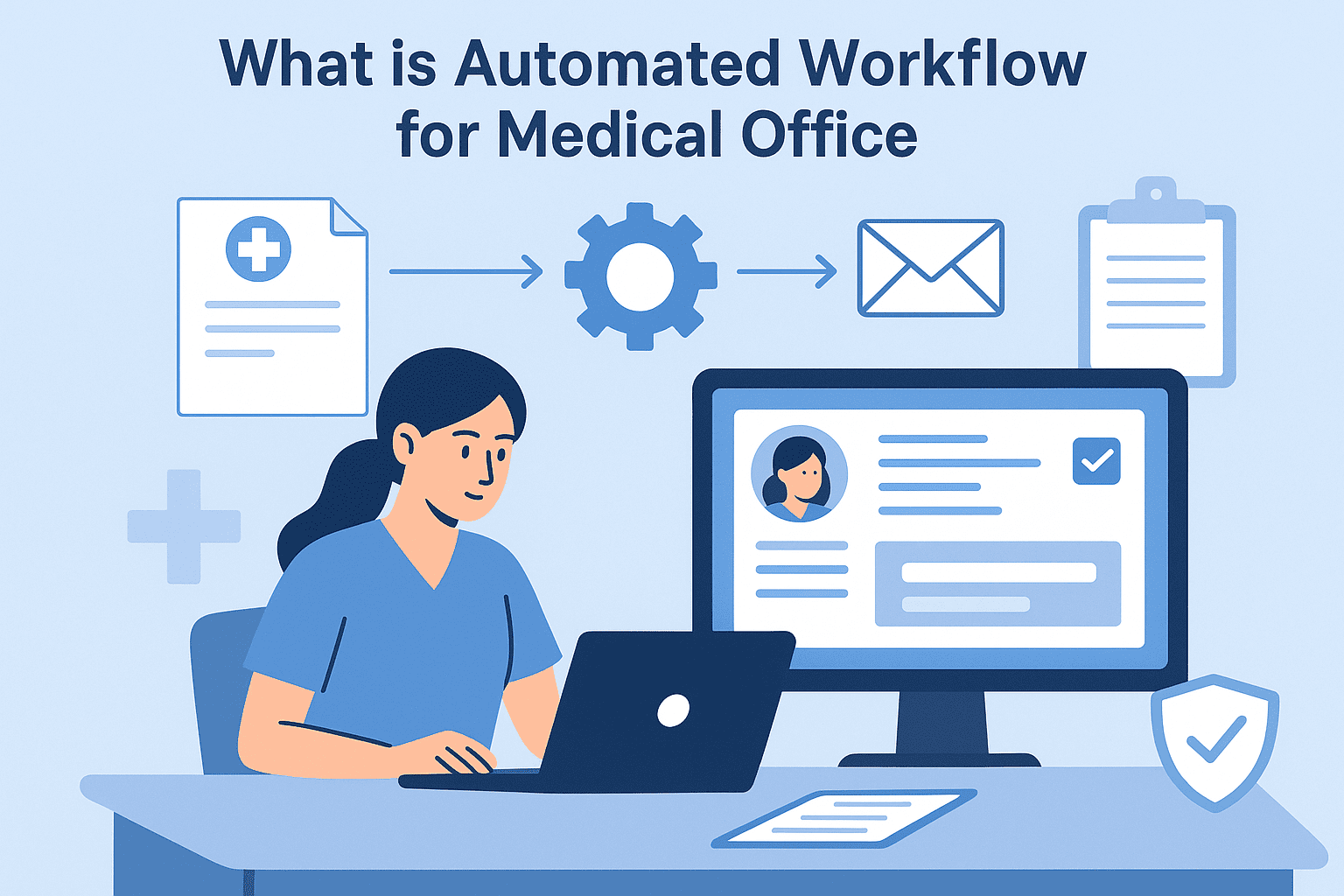
With AI workflow automation tools for medical office settings, the goal is to create a seamless digital environment where different systems and processes “talk” to each other. For instance, imagine when a patient submits an online form. Instead of a staff member manually downloading the PDF, naming it, and retyping the data into the patient database, automation can handle the entire process. The system can split the file into sections, label it correctly, update the digital record, and even schedule follow-up appointments; all without human intervention.
This kind of AI office automation software market growth reflects a clear shift in healthcare toward smarter, more connected systems that improve efficiency while protecting patient data. By reducing manual workload, clinics can focus on what matters most; delivering quality care.
Key Benefits of Automating Medical Office Tasks
1. Major Time Reduction
As we know, among the biggest benefits of automation is the sheer amount of time it saves. Administrative tasks like data entry, form sorting, or appointment reminders can take hours each day. Automating these steps not only speeds up processes but also reduces overtime costs and ensures that staff energy is directed toward patient-facing tasks rather than paperwork.
2. Enhanced Accuracy
Errors in medical records, billing, or scheduling can have serious consequences. Automated systems reduce these risks by eliminating the possibility of typos, missed entries, or misfiled documents. Every task follows a predefined set of rules, so patient data stays accurate and reliable.
3. Strengthened Compliance
Healthcare offices operate under strict regulatory standards such as HIPAA. Automation ensures that sensitive data is handled consistently and securely. Features like access logs, encryption, and audit trails mean every action is documented, reducing the chances of non-compliance and keeping patient trust intact.
4. Staff Empowerment
When staff are freed from repetitive administrative duties, they can engage in more meaningful work, such as interacting with patients, assisting doctors, or solving complex issues. This not only improves job satisfaction but also reduces burnout in busy medical offices.
5. Seamless Digital Transition
Automated workflows also support the transition to a paperless office. Digital records are easier to store, search, and analyze compared to stacks of paper files. This improved organization allows clinics to retrieve information faster, use data for better decision-making, and even integrate analytics tools to identify patterns in patient care.
Use cases of AI Automation in Healthcare
1. Clinical Medical Report Analysis
One of the most practical applications of AI Workflow automation tools for medical office environments is the automation of clinical medical report analysis. This use case focuses on reducing repetitive administrative work while supporting clinicians with accurate, structured insights.
Purpose of Automated Report Analysis
The main purpose is to simplify and speed up the medical reporting workflow by:
- Extracting key patient information from reports.
- Identifying abnormal lab values or test results.
- Summarizing medical history into structured, easy-to-read formats.
- Providing risk assessments (low, moderate, high) with reasoning.
- Suggesting preliminary recommendations for follow-up care.
Benefits for Healthcare Stakeholders
Automation provides value at multiple levels:
- Physicians: Save time on paperwork, focus more on patient care.
- Administrative staff: Ensure standardized reporting and smooth EMR/HIS integration.
- Patients: Benefit from faster consultations, better communication, and timely interventions.
- Healthcare system: Improved efficiency, accuracy, and reduced risk of human error.
Out of all the top AI Workflow automation tools for medical office tasks, GPTBots provides a specialized assistant designed specifically for clinical medical record analysis. The assistant can:
- Extract structured data from PDFs, Word files, or even image-based documents.
- Flag abnormal values such as high blood glucose or cholesterol levels.
- Generate risk assessments (low, moderate, or high) with clear reasoning.
- Provide evidence-based preliminary recommendations, such as ordering follow-up tests or monitoring specific symptoms.
- Seamlessly integrate into HIS, EMR, or telemedicine platforms via APIs or widgets.
To illustrate how this works in practice, let’s look at a real-life example.
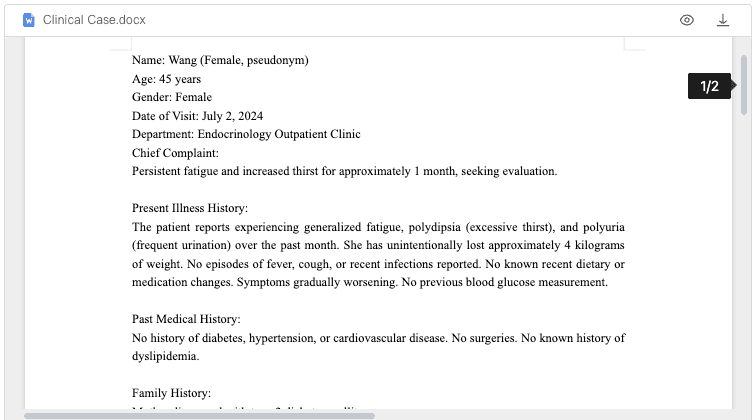
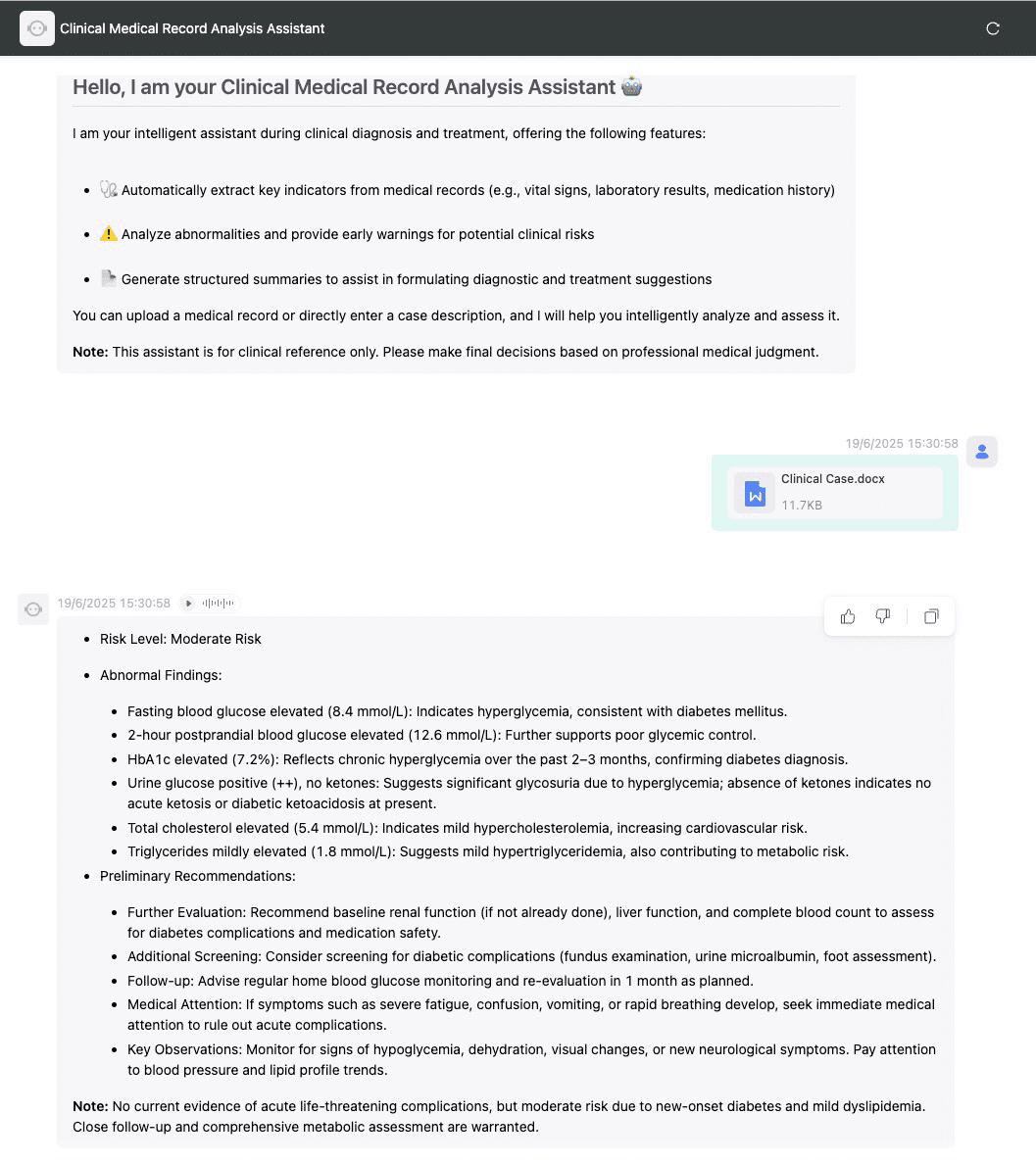
In the screenshots provided, a patient record (for Ms. Wang, a 45-year-old female) was uploaded into the assistant. The system automatically analyzed her medical history, extracted findings such as elevated fasting blood glucose (8.4 mmol/L) and HbA1c (7.2%), and flagged them as consistent with diabetes mellitus. It also noted mild hyperlipidemia and provided recommendations for further evaluation, including renal function tests and follow-up monitoring.
The AI classified her as moderate risk, giving both physicians and administrators a structured overview of her condition in seconds. This level of automation helps doctors make quicker, more informed decisions while maintaining compliance and accuracy.
2. AI Agents for Pharmacy and Healthcare
Pharmacies and healthcare providers often face overwhelming demands; patients seeking medication guidance, prescription clarifications, or quick answers about side effects and dosage. Traditionally, this means long queues, delayed responses, and overworked staff. This is where AI Workflow automation tools for medical office settings step in, offering pharmacy-focused AI agents that can handle routine but important interactions with accuracy and speed.
The purpose of these AI pharmacy assistants is simple: to bridge the gap between patients and pharmacists by automating repetitive inquiries, reducing human error, and providing around-the-clock support. Beyond saving time, they ensure better medication adherence, improve patient safety by alerting users to possible drug interactions, and create a seamless link between pharmacy operations and healthcare delivery.
Key Benefits of AI Agents in Pharmacy and Healthcare
- Medication Management: Patients can instantly check drug instructions, dosage schedules, or potential interactions without waiting for staff.
- 24/7 Availability: Provides continuous assistance, ensuring patients never feel stranded outside working hours.
- Improved Patient Safety: Flags risks such as incorrect medication use or dangerous combinations.
- Operational Efficiency: Reduces the burden on pharmacy staff, allowing them to focus on critical cases that need human judgment.
- Scalable Support: Handles thousands of queries simultaneously, making it ideal for large pharmacy chains and telemedicine platforms.
How GPTBots Supports This Use Case
GPTBots also provides a dedicated Pharmacy and Healthcare AI Assistant designed to automate these exact workflows. The assistant can answer patient queries about medicine use, return or exchange policies, and even interpret lab reports when integrated with hospital systems. Built with compliance in mind, GPTBots ensures HIPAA-grade data protection and multilingual support for global healthcare operations.
By integrating such AI for office automation solutions, pharmacies not only modernize their customer service but also align themselves with the growing AI Office automation software market, which is rapidly shaping the future of digital healthcare.
Real-Life Example
The screenshot below illustrates how a patient inquiry about medicine return or exchange was handled instantly by an AI assistant. Instead of waiting in line or calling a hotline, the patient simply typed their request, and the AI responded immediately with clear next steps, including the appropriate WeChat ID for direct assistance.

This small but powerful interaction highlights how AI agents can remove bottlenecks, speed up responses, and keep healthcare services running smoothly without overwhelming human staff.
3. AI for Smarter Workflows
Managing documentation and routine processes is one of the biggest challenges for healthcare professionals and medical offices. Doctors, nurses, and administrative staff spend a huge portion of their time on paperwork instead of patient care. This is where AI for Smarter Workflows comes in.
Purpose and Benefits
AI-powered workflow automation tools are designed to reduce manual effort, improve accuracy, and save valuable time. By integrating AI Workflow automation tools for medical office, healthcare organizations can:
- Streamline documentation – Automatically extract and summarize patient records, discharge notes, and test results.
- Save time – Reduce hours spent on manual data entry, freeing up doctors to focus on patient care.
- Improve accuracy – Minimize human errors by relying on AI-driven document recognition and structured reporting.
- Boost efficiency – Automate repetitive processes like bulk reporting or follow-up summaries.
- Enhance accessibility – Provide multilingual reports for patients across different regions.
In short, AI for Office automation in the medical field ensures smoother workflows, reduced administrative load, and better patient outcomes.
How GPTBots Helps with Smarter Workflows
GPTBots offers specialized assistants designed to handle complex documentation and workflow automation tasks for healthcare providers. With advanced LLM-based recognition, GPTBots can:
- Extract patient information from consultation notes, lab results, and hospital records.
- Generate draft reports, discharge summaries, and follow-up notes within seconds.
- Customize outputs based on department-specific needs or templates.
- Provide structured data analysis for faster decision-making.
This makes GPTBots an essential companion for doctors, clinics, and administrators looking to simplify processes and work more efficiently.
A real-life example can be seen in how a medical assistant agent built with GPTBots helps doctors create case drafts. In the screenshot below, a patient file was uploaded, and within seconds, the AI generated a clean, structured draft containing patient information, age, gender, and medical details. Instead of manually sifting through the PDF, the doctor immediately receives an organized case draft that can be quickly reviewed, edited, or shared.
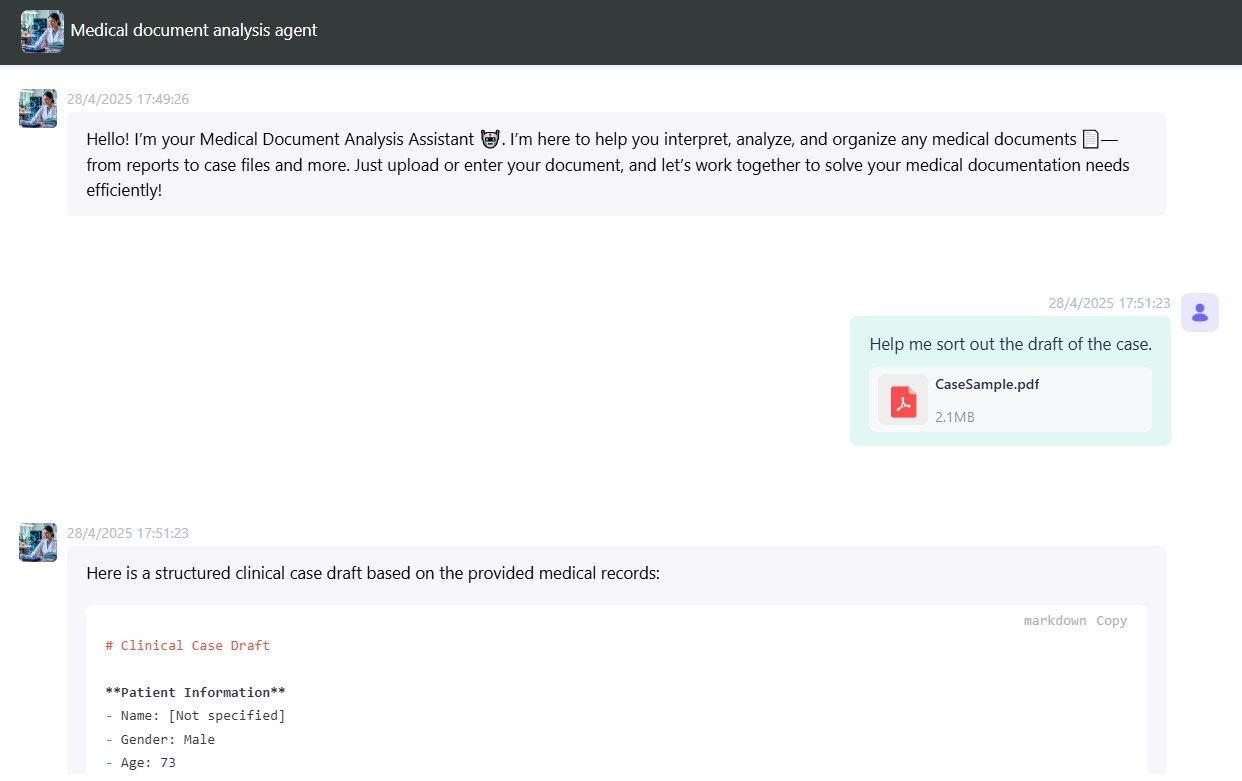
This demonstrates how GPTBots transforms unstructured medical records into ready-to-use documentation, making workflows smoother and smarter.
By deploying AI workflow automation tools for medical offices like GPTBots, healthcare providers can reduce administrative overload, cut down on delays, and deliver better patient care with fewer bottlenecks. Smarter workflows are not just about saving time; they also ensure that every healthcare professional has the right information, in the right format, exactly when they need it.
4. Real-Time Prioritization Triage
Another most time-sensitive challenge in healthcare is deciding which patient needs immediate attention and which cases can safely wait. Traditionally, this has relied on manual assessments by nurses and doctors, but human decision-making can be slowed down by workload, fatigue, or lack of complete information. This is where AI Workflow automation tools for medical office settings are transforming the triage process.
With the help of AI-based prescriptive analytics, hospitals and clinics can instantly evaluate patient data such as symptoms, medical history, vital signs, and even environmental or lifestyle factors. The AI system then generates a real-time risk score, helping medical professionals understand which patients are at higher risk of deterioration and should be prioritized. This ensures that critical cases are not overlooked, even during busy hours or emergency surges.
The benefits of real-time prioritization triage in healthcare include:
- Faster response times – AI highlights urgent cases instantly, allowing doctors to intervene sooner.
- Reduced human error – Automated insights minimize the risk of missing critical warning signs.
- Improved resource allocation – Medical staff can focus their efforts where they are needed most.
- Better patient outcomes – By identifying risks early, hospitals can reduce readmissions and prevent avoidable emergencies.
- Support during peak hours – AI systems maintain accuracy and consistency even when staff are overloaded.
In addition to clinical impact, this use case shows how the AI Office automation software market is expanding rapidly. Healthcare providers are realizing that adopting AI-driven triage systems is not only about efficiency but also about saving lives. As adoption increases, these technologies are becoming essential for modern medical offices that aim to provide high-quality, timely care.
Real-Life Example
For example, platforms like Lightbeam Health showcase how advanced analytics can scan thousands of clinical and non-clinical factors, sometimes more than 4,500 variables, to highlight hidden risks that might otherwise go unnoticed. Beyond identifying at-risk patients, these systems can also suggest targeted interventions, such as closer monitoring or early preventive treatments, which directly contribute to better patient outcomes.
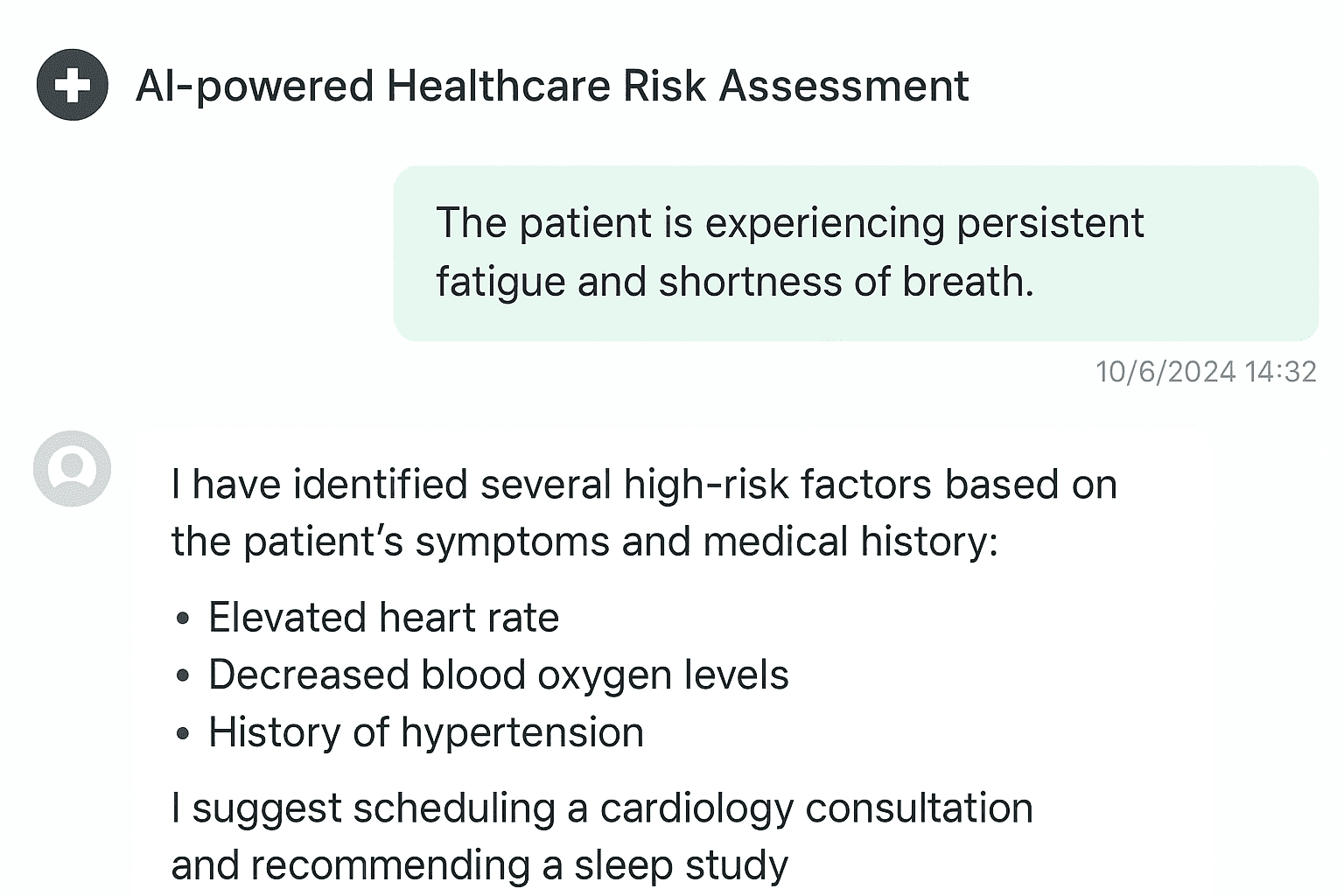
5. Personalized Medications and Care
Last, but not the least, promising application of AI in healthcare is its ability to design personalized treatment and care plans. Instead of following a “one-size-fits-all” approach, AI systems analyze detailed patient information such as genetic data, medical history, lifestyle habits, and even social or environmental factors. This allows healthcare professionals to recommend treatments that are more precise, effective, and tailored to each patient’s unique needs.
AI-powered solutions can also identify potential risks before they become serious health concerns. For example, a patient with a specific genetic profile may be at higher risk of adverse drug reactions. AI can flag this information and suggest safer alternatives. Similarly, in chronic disease management, AI can recommend individualized care strategies, ensuring patients receive continuous support that adapts as their condition changes. Companies like Aitia already use machine learning to match patients with treatments proven to be most effective for their specific conditions.
To support this shift, AI Workflow automation tools for medical office integrate patient data across different sources, helping doctors create personalized care plans more efficiently. At the same time, the growing AI for Office automation adoption in healthcare is making it easier to bring precision medicine into everyday clinical practice.
Benefits of Personalized Medications and Care with AI
- Improved treatment effectiveness – AI matches patients with the therapies most likely to work for them, reducing trial-and-error.
- Reduced side effects – By considering genetic and medical history, AI helps avoid medications that may cause harmful reactions.
- Lower healthcare costs – Eliminates unnecessary treatments and hospital visits, making care more efficient.
- Faster recovery – Personalized treatments shorten the time needed to find the right medication or therapy.
- Better patient adherence – Patients are more likely to follow treatment plans that fit their unique needs and lifestyle.
- Data-driven decisions – AI Workflow automation tools for medical office integrate patient data to support accurate and timely care planning.
- Future-ready healthcare – Adoption of AI for Office automation prepares clinics and hospitals for precision medicine and long-term efficiency.
Real-Life Example
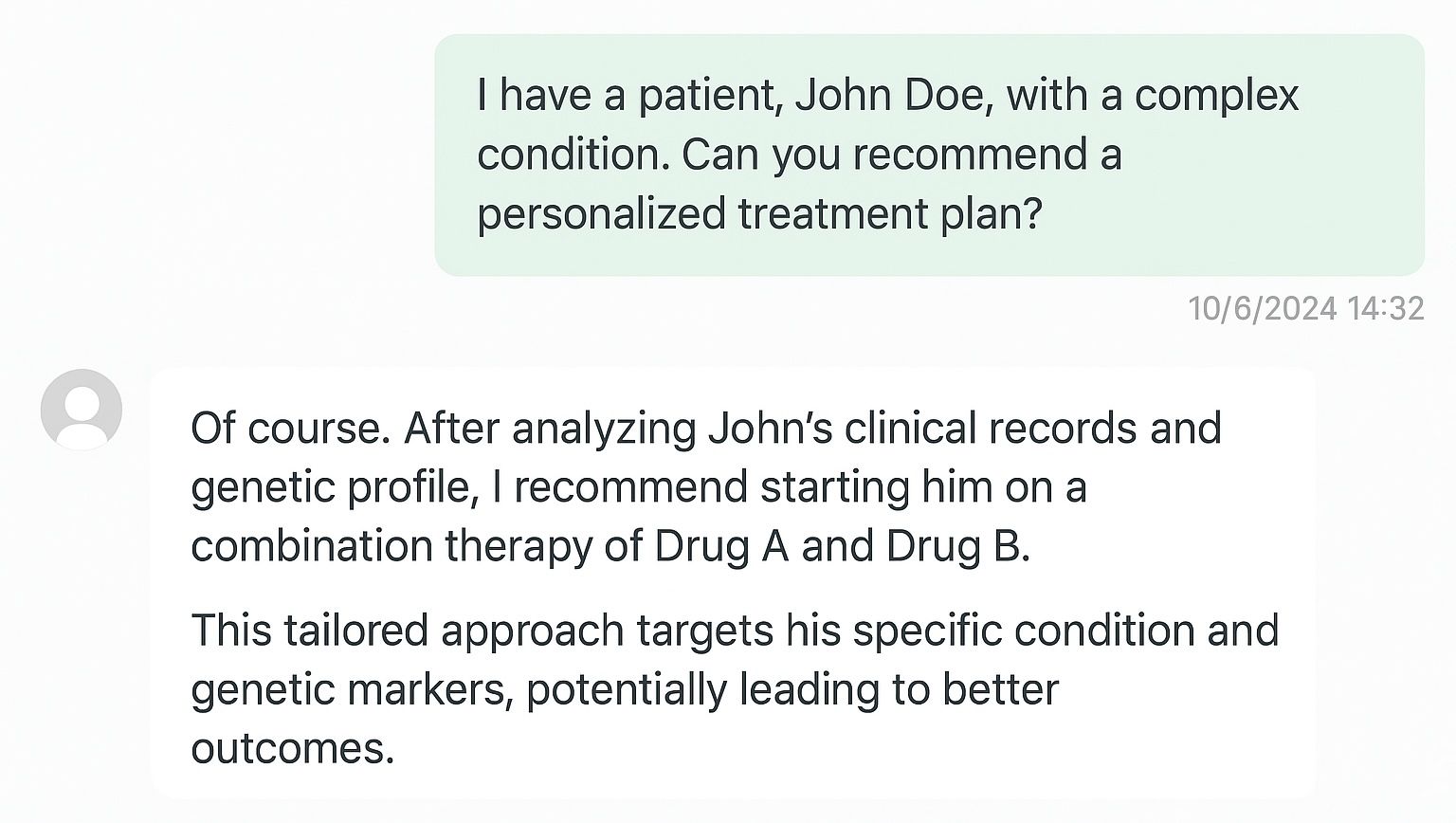
This simulated conversation reflects how platforms like Aitia use advanced machine learning to process thousands of data points, clinical history, lab results, and genetic information. Instead of relying on the traditional trial-and-error approach to find the right therapy, the AI narrows down the best-fit treatment pathways instantly.
By embedding this into daily workflows, healthcare providers save time, reduce patient risk, and deliver care that is personalized and evidence-based. This also ties into the broader AI Office automation software market, where integrated solutions provide secure data management, automated reporting, and seamless communication between AI insights and clinical teams.
How do AI Automation Tools Work?
AI automation tools in healthcare and medical offices are designed to streamline complex tasks, reduce human error, and allow staff to focus more on patient care rather than administrative burdens.

To understand how they work, let’s break down the process into clear steps:
1. Data Collection and Integration
The foundation of AI automation lies in collecting patient and operational data from multiple sources. Medical offices generate huge volumes of information every day—such as electronic health records (EHRs), lab test results, appointment logs, billing details, and even external health data like pharmacy or insurance records.
AI automation tools work by integrating these different datasets into one system. Instead of staff manually pulling records from various platforms, AI Workflow automation tools for medical office automatically gather and organize the data, ensuring that all information is accessible in real time.
For example:
- A patient’s test results can be directly linked to their medical history.
- Billing systems automatically sync with insurance databases.
- Appointment schedules connect with doctors’ availability.
This seamless integration saves hours of manual work and ensures no detail is overlooked.
2. Data Processing and Analysis
Once data is collected, the next step is intelligent processing. AI systems use algorithms to scan through the data, identify patterns, and highlight important insights. In healthcare, even a small detail can make a big difference; for example, a slight change in vitals could indicate a serious condition.
AI tools analyze:
- Patient data (age, symptoms, medical history, lifestyle factors).
- Operational data (wait times, resource usage, staff allocation).
- Financial data (insurance coverage, claims, revenue cycle).
By doing this, the system not only processes information faster than humans but also provides recommendations for the next best step. This is where the AI Office automation software market is rapidly growing; organizations are adopting AI-driven solutions to handle tasks that traditionally required multiple staff members.
3. Task Automation and Workflow Execution
After analyzing data, AI automation tools move into action by automating repetitive tasks. These tasks can range from sending appointment reminders to generating invoices or even triaging patient cases.
Examples include:
- Administrative automation – Scheduling appointments, updating records, managing prescriptions.
- Clinical support automation – Prioritizing patients based on severity, alerting doctors about urgent cases.
- Financial automation – Automating insurance claim submissions, verifying coverage, reducing billing errors.
Here, AI Workflow automation tools for medical office act like a virtual assistant that ensures tasks are carried out consistently and on time, without requiring constant human input.
4. Real-Time Decision Support
One of the most powerful features of AI is its ability to support decision-making in real time. By analyzing incoming data continuously, AI tools can notify healthcare providers of urgent needs or suggest actions based on predictive insights.
For instance:
- If a patient’s symptoms suggest risk of complication, the system alerts the doctor immediately.
- If a medical office is overbooked, AI tools can reschedule patients or redistribute workload across departments.
This real-time triage ensures that no critical issue goes unnoticed and that resources are used effectively.
5. Continuous Learning and Improvement
AI systems don’t just execute tasks; they learn from past actions to improve future performance. This is done using machine learning models that adapt as they process more data. Over time, the tools become more accurate at predicting patient needs, automating workflows, and reducing errors.
For example:
- Billing errors that occur once are flagged so they don’t repeat.
- Treatment plans are refined based on outcomes of similar past cases.
- Workflow bottlenecks are identified and eliminated.
This continuous improvement makes AI Office automation software market highly valuable for healthcare providers aiming to increase efficiency without compromising on patient care.
6. Security and Compliance Layer
Since healthcare involves sensitive patient data, AI automation tools also work by embedding strong security and compliance measures. These include encryption, role-based access control, and strict adherence to healthcare regulations like HIPAA.
By automating compliance tasks, such as record-keeping, audit trails, and data security; AI ensures that medical offices maintain trust and meet legal requirements.
Top AI Automation for Medical Office
Running a medical office involves juggling multiple tasks every single day, scheduling patient appointments, managing medical billing, handling repetitive patient queries, processing documents, and keeping up with compliance requirements. Traditionally, these tasks consume valuable staff hours and often lead to delays, errors, or unnecessary administrative stress.
This is where AI Workflow automation tools for medical office come in. By automating repetitive, time-consuming processes, they allow doctors, nurses, and administrative teams to focus on what truly matters; delivering high-quality patient care.
Among the growing number of tools in the healthcare industry, GPTBots comes out as one of the most powerful, flexible, and user-friendly solutions for medical offices today.
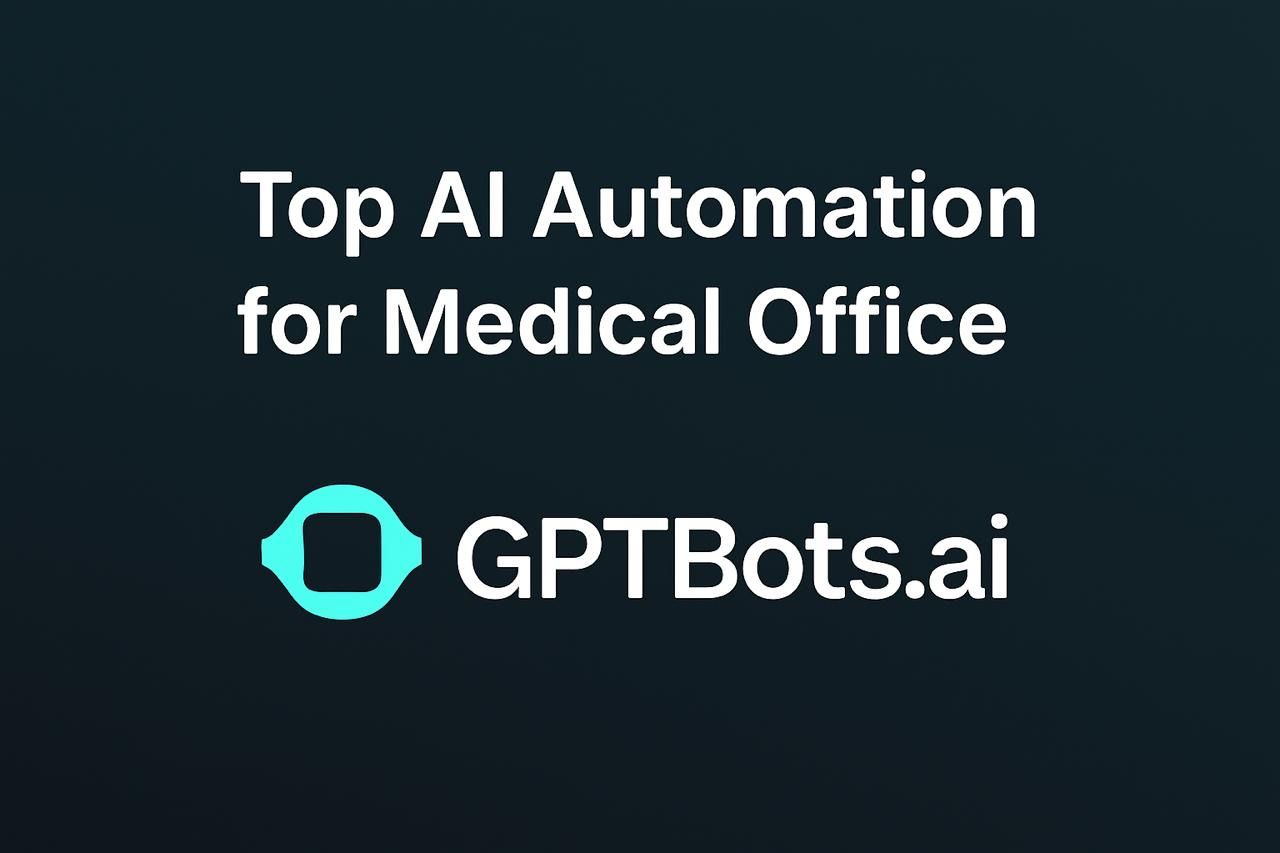
Why GPTBots is the Best AI Automation for Medical Offices
GPTBots is a no-code, web-based platform that makes it easy for healthcare providers to build intelligent chatbots and automated workflows without requiring any programming expertise. What sets it apart is its ability to combine ease of use with powerful customization—making it a perfect fit for both small clinics and large hospitals.

Here’s how GPTBots transforms a medical office:
1. Appointment Scheduling & Reminders
It wouldn’t be wrong to say that one of the most time-consuming tasks in any medical office is appointment booking. Patients often call in with questions about availability, cancellations, or rescheduling. GPTBots makes this process seamless by:
- Allowing patients to book or reschedule appointments directly through an AI chatbot.
- Sending automated reminders via WhatsApp, email, or SMS to reduce no-shows.
- Syncing with calendars to keep doctors’ schedules updated in real time.
Benefit: This not only saves staff hours but also ensures a smoother patient experience.
2. Automating Patient Queries & FAQs
From “What are your clinic hours?” to “Do you accept my insurance?”, staff members spend a large portion of their day answering repetitive questions. GPTBots solves this by:
- Using a Knowledge Base feature where you can upload PDFs, documents, spreadsheets, or even website content.
- Training the bot to give instant, accurate answers to frequently asked questions.
- Supporting diverse formats, including text, images, videos, and even audio, making communication easier for patients of all backgrounds.
Benefit: This reduces administrative workload while ensuring patients always get quick and reliable responses.
3. Medical Billing & Insurance Support
Billing errors can be frustrating for both patients and providers. GPTBots helps by:
- Automating the initial patient billing queries, such as insurance coverage, copay details, or payment deadlines.
- Directing complex cases to a human staff member through a smooth AI-to-human switch feature.
- Maintaining a log of all conversations for future reference and compliance.
Benefit: Improved accuracy in billing processes and reduced chances of financial disputes.
4. Streamlined Internal Workflows
Medical offices often deal with huge amounts of documentation and coordination between departments. GPTBots provides:
- Visual, flow-based bot creation to automate internal processes like patient intake forms or consent documentation.
- Secure access control, allowing only authorized staff to handle sensitive data.
- Integrations with popular platforms like Slack, Zapier, or Discord to keep everyone on the same page.
Benefit: Staff productivity is boosted, and critical workflows run smoothly without unnecessary delays.
5. Seamless Integration & Flexibility
Unlike many rigid automation tools, GPTBots integrates easily with the systems medical offices already use. Whether it’s linking with EHR/EMR systems, connecting to messaging apps, or embedding a chatbot on the clinic website, GPTBots ensures that the transition to automation is smooth.
Benefit: Medical offices can adopt AI for Office automation without disrupting existing workflows.
Key Features of GPTBots for Healthcare Providers
To summarize, here are the standout features that make GPTBots the best choice for AI Workflow automation tools for medical office:
- No-Code Platform: Build and customize bots with simple clicks, no programming needed.
- Knowledge Base Training: Upload PDFs, spreadsheets, Q&As, or even entire websites to train the chatbot with your facility’s specific data.
- Diverse Input Support: Handle text, images, audio, and video queries.
- Prebuilt Templates: Quickly launch healthcare bots for common tasks.
- Flexible Integrations: Connect with WhatsApp, Slack, Zapier, Discord, and more.
- AI-to-Human Switching: Escalate queries to human staff when needed.
- Access Control: Keep sensitive medical information secure with role-based access.
Why GPTBots is the Future of AI in Healthcare
By choosing GPTBots, medical offices can transform the way they work; reducing repetitive workloads, minimizing errors, improving patient communication, and increasing overall efficiency. In a field where every second counts, AI-powered automation ensures that patients get timely care and staff can focus on tasks that require human expertise.
Whether you’re a small clinic looking to improve scheduling or a large hospital wanting to streamline patient queries, GPTBots provides an adaptable, cost-effective solution. It is not just another chatbot builder; it’s a complete ecosystem designed to bring the full power of AI for Office automation into healthcare.
In short, GPTBots makes it simple, reliable, and effective to build AI-powered workflows that truly transform medical offices.
FAQs: AI for Office Automation in Healthcare
1. What is AI office automation in healthcare?
AI office automation in healthcare refers to using artificial intelligence tools and platforms to handle repetitive administrative tasks in medical offices. This includes scheduling appointments, managing patient records, sending reminders, processing billing, and even answering FAQs. Instead of manual effort, AI Workflow automation tools for medical office help streamline these tasks, saving time for healthcare staff and improving patient care.
2. How can AI improve efficiency in medical offices?
AI improves efficiency by automating repetitive and time-consuming processes. For example, a chatbot can manage patient appointment requests, while AI-powered systems can automatically process insurance claims or generate reports. This reduces the workload of staff, minimizes human errors, and allows medical professionals to focus more on patient care rather than paperwork.
3. Is AI automation safe for handling patient data?
Yes, but only when used with platforms that follow strict healthcare compliance standards, such as HIPAA in the U.S. and GDPR in Europe. Leading AI office automation software uses secure encryption, access control, and compliance frameworks to ensure that sensitive patient data remains protected. Solutions like GPTBots also allow organizations to upload their own internal documents; ensuring data is managed securely within the medical office environment.
4. Can AI replace medical staff in office tasks?
AI is not meant to replace staff but to support them. Instead of spending hours on manual scheduling, reminders, or data entry, staff can rely on AI systems to perform these functions automatically. This frees up healthcare teams to dedicate their time to tasks that truly need human expertise, such as patient interaction, diagnosis, and personalized care.
5. What are the costs of implementing AI office automation?
The cost varies depending on the solution and level of automation needed. Some platforms offer subscription-based pricing, while others require a one-time investment. However, in most cases, the return on investment is clear; reducing errors, saving staff hours, and streamlining operations often outweigh the initial cost. Many vendors, including GPTBots, also provide scalable solutions that can grow with your medical office needs.
6. How does AI integrate with existing medical systems?
Modern AI Office automation software market solutions are designed to integrate smoothly with Electronic Health Records (EHRs), Electronic Medical Records (EMRs), and patient management systems. This ensures that offices do not have to replace their current infrastructure. Instead, AI tools work alongside existing systems to create a more efficient workflow.
7. Which AI automation solution is best for medical offices?
While there are many options, GPTBots is the top choice for the many good reasons. Its no-code, web-based platform makes it simple to create healthcare chatbots tailored to any medical office’s needs. From appointment scheduling and billing support to answering patient queries, GPTBots offers flexibility, data training with internal documents, and integration with platforms like WhatsApp and Slack. This makes it a practical, secure, and scalable choice for healthcare providers.
Crux of the Matter
In the end, we can conclude that AI is transforming the way medical offices handle their daily operations. By adopting AI Workflow automation tools for medical office, healthcare providers can significantly reduce repetitive administrative work, improve accuracy, and focus more on patient-centered care. The AI Office automation software market is growing rapidly, offering many solutions; but choosing the right one is key.
Among the available options today, GPTBots is highly recommended as the top AI solution for medical offices. With its no-code interface, customizable workflows, and ability to integrate with existing systems, GPTBots empowers medical offices to deploy automation quickly and effectively. Whether it’s appointment scheduling, managing patient queries, or securely handling documents, GPTBots simplifies AI adoption and ensures that automation directly improves both efficiency and patient satisfaction.
By investing in the right AI automation platform today, medical offices can set themselves up for long-term success, better patient outcomes, and smoother workflows.
Get a Custom Demo






